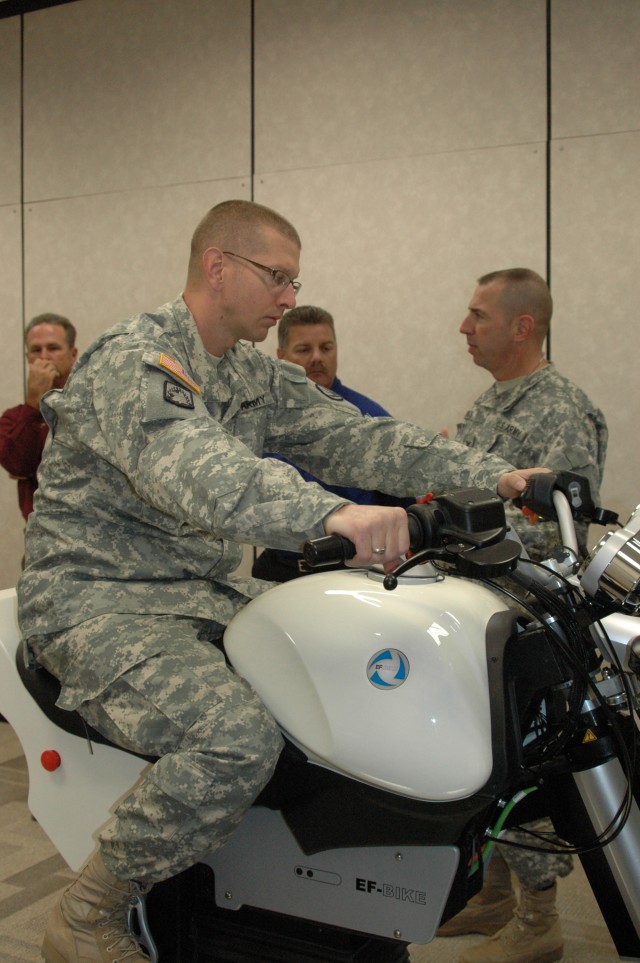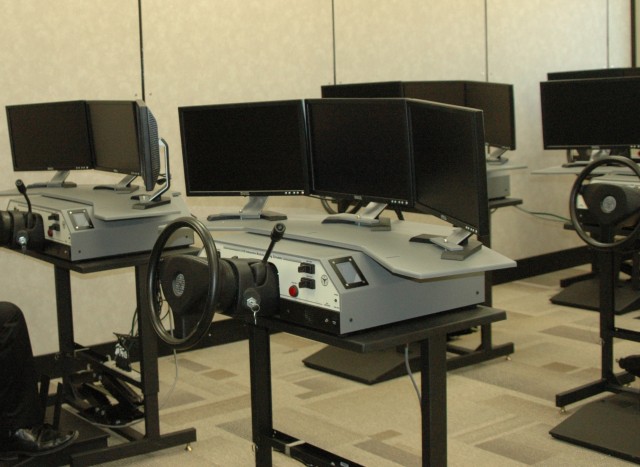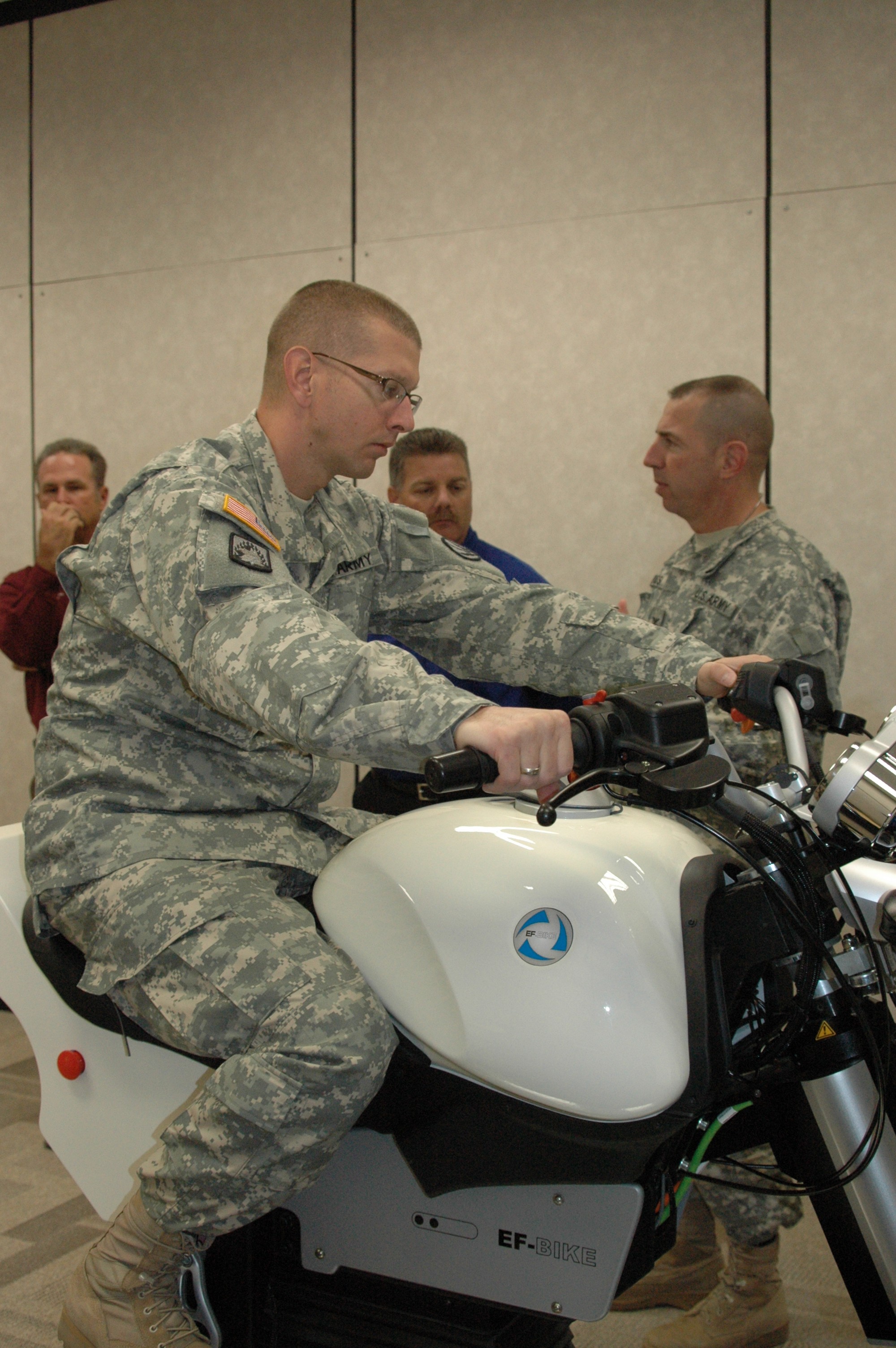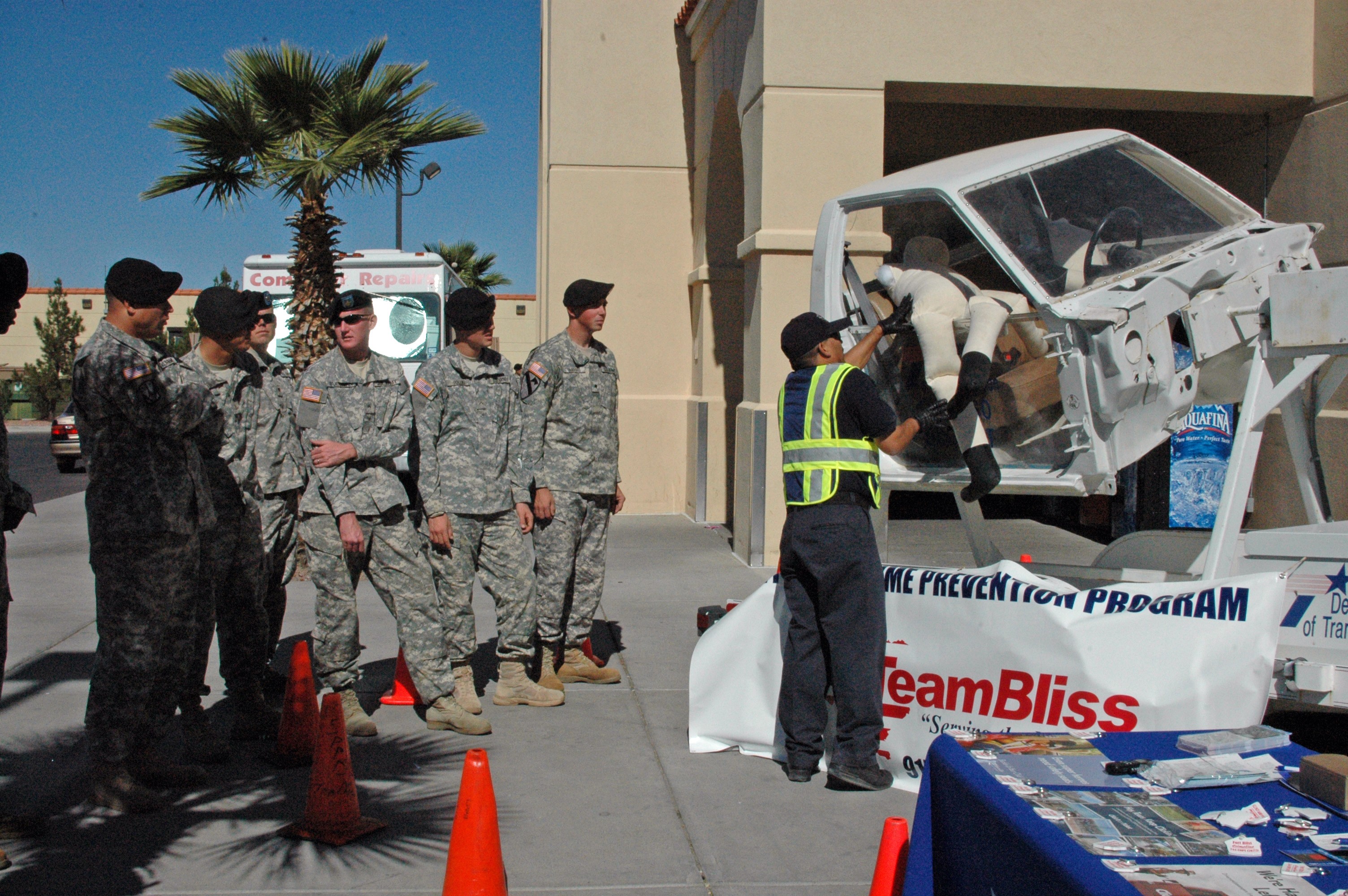FORT BLISS, Texas - New privately owned vehicle and motorcycle simulators are some of the many training resources Fort Bliss and Army Tactics Safety Management Program officials have initiated to help safe Soldiers' lives.
The goal of the POV and motorcycle training is to help Soldiers become better skilled drivers. The new simulators are situated at Biggs Army Airfield, Bldg. 11190, and training sessions are schedule to begin Jan. 1. The target audience is Soldiers 26 and under.
"Most of the deaths we see are tied to POV and motorcycle accidents," said Col. John Rossi, Fort Bliss deputy commanding general and chief of staff. "Truthfully, the military puts a lot of effort trying to help Soldiers protect themselves, but our accident rates are still pretty high. We want to try and bring injuries and deaths down because we are losing too many Soldiers."
The hands-on simulator replicates realistic conditions on the road, which Rossi said appeals more to the younger generation as they are more accustomed to video games. Rossi said the simulators will give them an opportunity to apply skills they learned and at the same time make it more interesting than a regular classroom lecture. He said the new simulators are of better quality and will be tailored to the needs of the young Bliss population.
There are currently 26 simulators: 25 POV and one motorcycle. Some simulator features include situational traffic surroundings such as pedestrian crossing, parked cars backing up, icy conditions, limited visibility and more, where Soldiers will have to make quick decisions to avoid mishaps.
The motorcycle simulator is the equivalent of a 1,000 cc bike and is not set up for beginners, said James Hill, the Fort Bliss Safety director; Fort Bliss personnel usually train on 125 and 250 cc bikes. Therefore, the motorcycle simulator will most likely be used for remedial training.
"But it's not about the size, it's about the basic fundamentals - see and project," Hill said. "Motorcycle riders must be alert 110 percent at all times and they must be able to see or drive in different situations. It's about trial and error. Operators will be able to see the mistakes they make before getting on the road."






Social Sharing